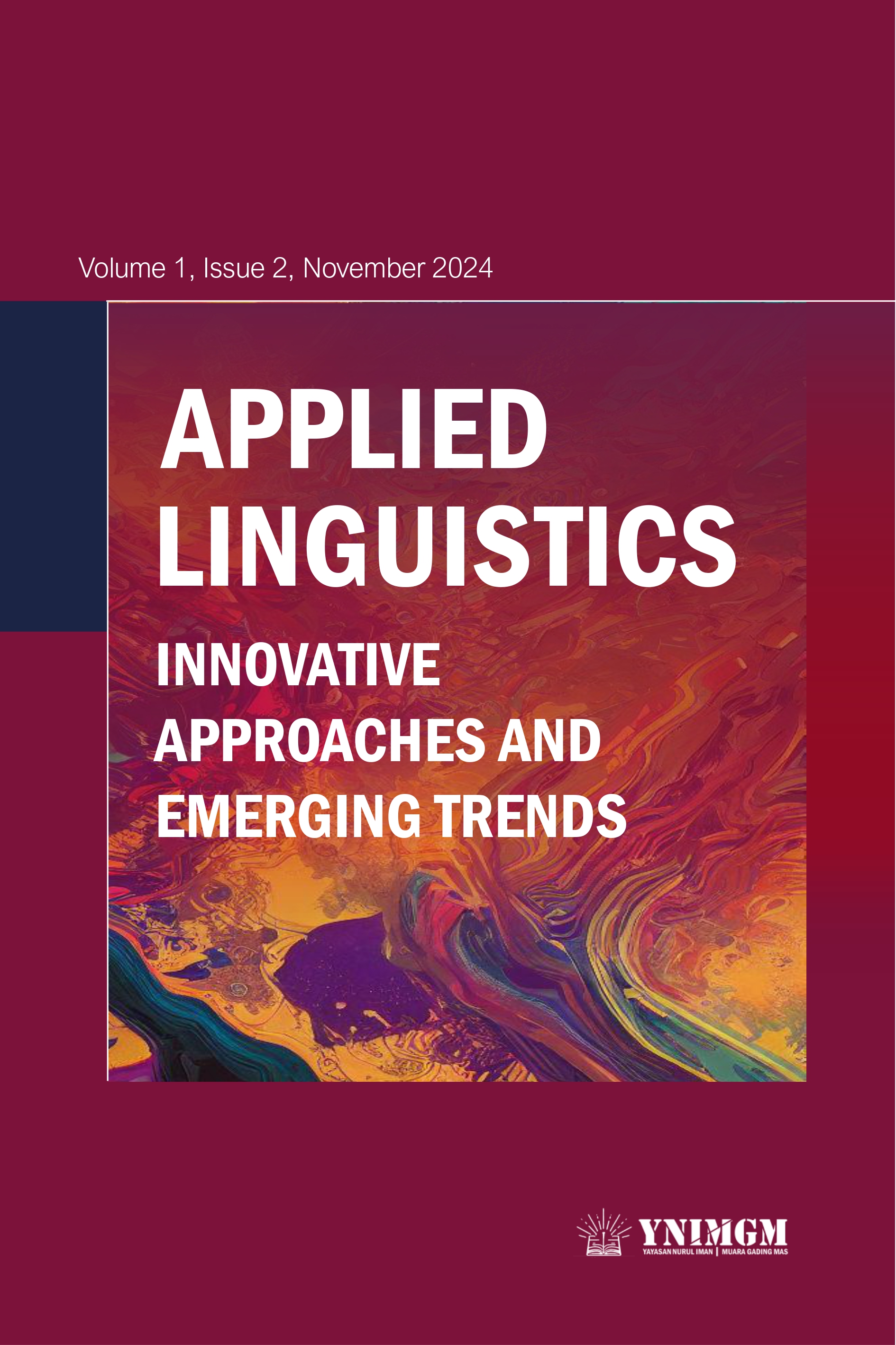Language Markers and Social Identity in Digital Communication Among Generation Z in Indonesia
Main Article Content
Abstract
This study examines the use of language markers in digital communication among Generation Z in Indonesia, focusing on their functions and socio-cultural implications. Using a qualitative approach, the research analyzed data from document observations, semi-structured interviews, and focus group discussions. Data analysis involved four stages: data reduction, contextual analysis, triangulation, and interpretation. The findings show that markers like “so,” “then,” “maybe,” and “I guess” serve functions such as enhancing politeness, clarifying messages, and fostering familiarity. These markers also reflect globalization’s influence, cultural values of politeness and inclusiveness, and Generation Z’s digital norms. The study illustrates how linguistic choices shape social identity, highlighting language markers’ role in effective communication. The results offer valuable insights into Generation Z’s communication practices and implications for cross-cultural and intergenerational dialogue in digital spaces
Downloads
Article Details

This work is licensed under a Creative Commons Attribution 4.0 International License.
How to Cite
References
Journals
Danielewicz-Betz, A. (2013). (Mis)Use of E-Mail in Student-Faculty Interaction: Implications for University Instruction in Germany, Saudi Arabia and Japan. JALTCALL, 1, 1832–4215. https://doi.org/10.29140/jaltcall.v9n1.147
Fitriani, R. S., Hidayati, R. P. P., & Budiarti, A. (2021). Pragmatic Markers and Events on Social Media in New Habit Era of COVID-19 Outbreak. Linguistics and Culture Review, 5(2), 1061–1071. https://doi.org/10.21744/lingcure.v5nS2.1698
Frankenberg-Garcia, A. (2018). Investigating the Collocations Available to EAP Writers. Journal of English for Academic Purposes, 35, 93–104. https://doi.org/10.1016/j.jeap.2018.07.003
Fraser, B. (1999). What Are Discourse Markers? Journal of Pragmatics, 31, 931–952. https://doi.org/10.1016/S0378-2166(98)00101-5
Lifintsev, D., & Wellbrock, W. (2019). Cross-Cultural Communication in The Digital Age. Communication Studies, 1(28), 93–104. https://doi.org/10.25768/fal.ec.n28.a05
Nkirote, A. (2024). The Pragmatics of Politeness in Cross-Cultural Communication. European Journal of Linguistics, 3(3), 27–39. https://doi.org/10.47941/ejl.2052
Peng, Y. (2023). Understanding the Cultural Identity of EFL Learners from the Eco-Linguistics Perspective: Evidence from Students in Arts College Before and After the COVID-19 Epidemic Period. Frontiers in Psychology, 14, 1–21. https://doi.org/10.3389/fpsyg.2023.1249334
Priwati, A. R., & Sanitioso, R. B. (2024). Exploring National Identity and Collective Memory Across Cultures: Comparison of Indonesia and France. Frontiers in Political Science, 6, 1–11. https://doi.org/10.3389/fpos.2024.1233210
Ramírez-Esparza, N., Chung, C. K., Sierra-Otero, G., & Pennebaker, J. W. (2011). Cross-Cultural Constructions of Self-Schemas: Americans and Mexicans. Journal of Cross-Cultural Psychology, 43(2), 233–250. https://doi.org/10.1177/0022022110385231
Seyfi, S., Vo-Thanh, T., & Zaman, M. (2024). Hospitality in the Age of Gen Z: A Critical Reflection on Evolving Customer and Workforce Expectations. International Journal of Contemporary Hospitality Management, 36(13), 118–134. https://doi.org/10.1108/ijchm-01-2024-0035/full/html
Siagian, N. R., & Yuliana, N. (2023). The Role of Social Media in Generation Z Communication. Interdisciplinary Journal of Advanced Research and Innovation, 1(3), 109–118. https://doi.org/10.58860/ijari.v1i3.27
Telaumbanua, Y. A., Zendrato, N. E. C., Nazara, B. T., & Harefa, E. C. (2024). Analyzing the Language Style of Generation Z Teenagers in Their Instagram Posts. Journal of English Language Teaching and Literature, 5(2), 588–600. https://doi.org/10.56185/jelita.v5i2.790
Books
Brown, P., & Levinson, S. C. (1987). Politeness: Some Universals in Language Usage. Cambride University Press. https://doi.org/10.1017/CBO9780511813085
Schiffrin, D. (2008). Discourse Markers: Language, Meaning, and Context. In D. Schiffrin, D. Tannen, & H. E. Hamilton (Eds.), The Handbook of Discourse Analysis (pp. 54–75). John Wiley & Sons, Inc. https://doi.org/10.1002/9780470753460.ch4
Wilson, D., & Sperber, D. (2004). Relevance Theory. In L. Horn & G. Ward (Eds.), The Handbook of Pragmatics (pp. 606–632). Wiley-Blackwell. https://doi.org/10.1002/9780470756959.ch27

